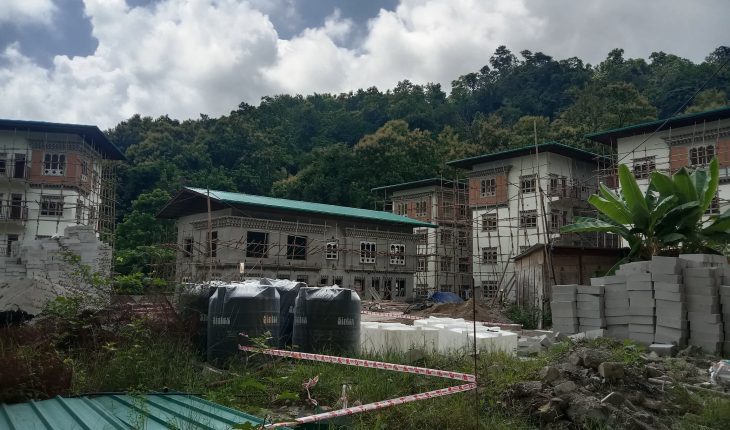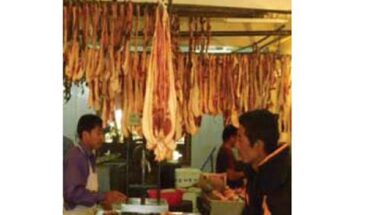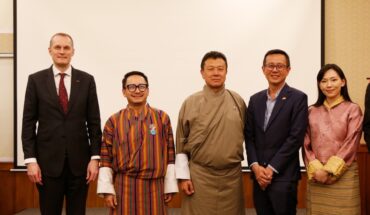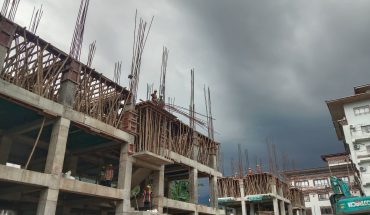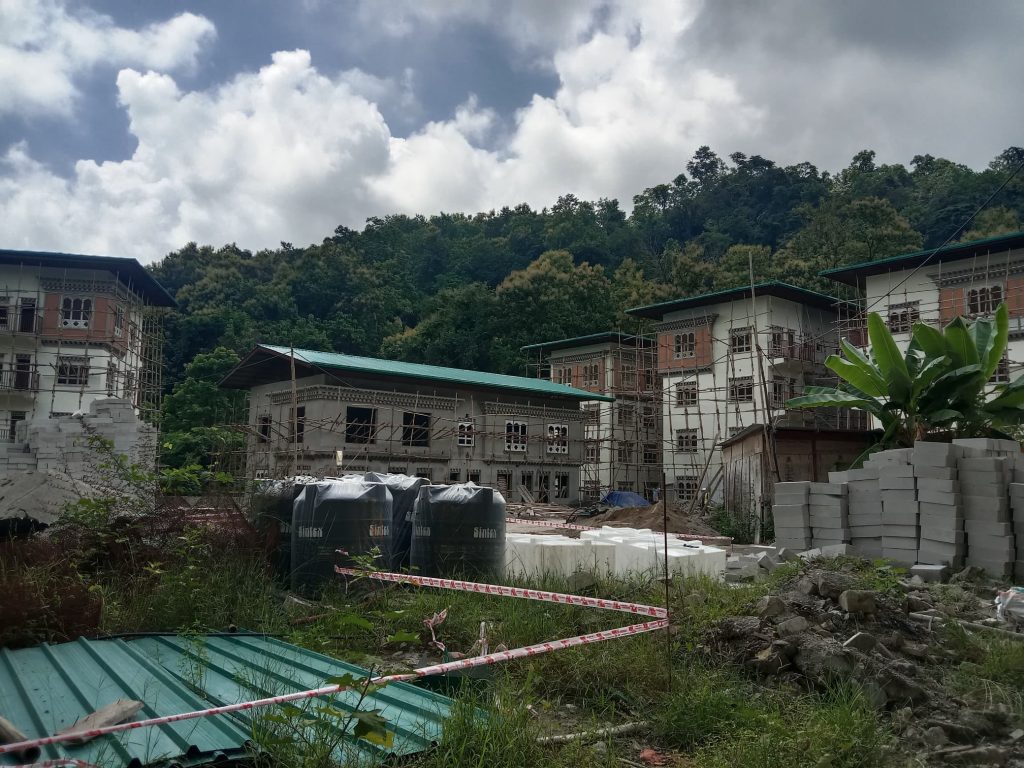
DAWA ZANGMO | Samdrup Jongkhar
Bhutan’s efforts to provide affordable and inclusive housing are taking shape with construction works underway in Dradrulthang, and Samdrup Jongkhar Toed under the Green and Resilient Affordable Housing Sector Project (GRAHSP).
The project, supported by the Asian Development Bank (ADB), aims to deliver climate resilient housing integrated with community service facilities for hundreds of Bhutanese households.
In Samdrup Jongkhar Toed, construction is progressing on 11 buildings, each with eight housing units. The contract, worth Nu 281.2 million, has been awarded to Penjore Construction Private Limited.
The structures are being built to incorporate elderly, women, children, and disability (EWCD) friendly features.
According to project engineer, ground floor units have been reserved for people with disabilities, with ramps and accessible washrooms designed to ensure inclusivity.
Meanwhile, in Dradrulthang, the housing project is advancing as part of the same framework. Like the Samdrup Jongkhar site, the facilities here will include Integrated Service Centers (ISCs) equipped with counseling rooms, skills training areas, and community halls.
The ISCs will function as childcare facilities for working mothers, shelters for women in difficult circumstances, and hubs for livelihood and advocacy programs once the housing sites are completed.
The project is financed by the ADB, which has provided USD 30 million in loans and grants, with an additional USD 7 million coming from non-ADB sources, bringing the total project cost to USD 37 million.
The broader project covers multiple sites including Phuentsholing’s Core LAP and Nganglam, alongside Dradrulthang and Samdrup Jongkhar Toed.
According to the Gender Equality and Social Inclusion (GESI) Action Plan developed for the project, all housing complexes will feature ramps, elderly-friendly ground-floor facilities, and accessible service centers.
Washrooms and public spaces will be designed with inclusivity in mind, ensuring residents of all backgrounds and abilities can use the facilities with ease.
Project Engineer, Chime said, “At least 700 households across the sites are expected to directly benefit from the housing and community service facilities. The goal is to create living spaces that are not only affordable but also accessible and supportive of vulnerable groups.”
Construction in Phuentsholing’s Core LAP involves eight buildings with a total of 166 units, awarded to M/s PLCPL-RBIPL JV at a contract value of Nu 415.7 million.
Similarly, in Nganglam, eight buildings with 32 units are being developed by KD-Chhimi JV under a contract valued at Nu 142.6 million.
Together with Dradrulthang and Samdrup Jongkhar Toed, these sites form the backbone of Bhutan’s initiative to expand affordable housing nationwide.
Beyond housing, the ISCs are expected to play a pivotal role in community engagement. They will host awareness programs on hygiene, sanitation, disaster preparedness, and gender issues, with women expected to make up at least half of the participants.
The National Commission for Women and Children (NCWC) will be involved in supporting the operations of these centers, especially in programs related to women and children.
Project Engineer Tandin said, “The Integrated Service Centers will serve as safe spaces for women, children, and families in need. By combining housing with social support, the project strengthens the resilience of communities.”
The project design emphasizes climate resilience in addition to social inclusion. Buildings are being constructed with features that account for Bhutan’s changing climate, ensuring durability and safety.
According to engineers involved in the work, special attention has been given to structural safety, sanitation systems, and sustainable designs to make the housing more resilient.
The government has underlined the importance of such initiatives in tackling urban housing challenges, particularly in fast growing towns like Samdrup Jongkhar.
Rising demand for affordable homes has also placed pressure on local administrations, making large-scale housing projects critical.
The Project Manager noted that the ground floors of each building will host service facilities and spaces for community interaction. By integrating housing with social services, the project aims to create not just homes, but also neighborhoods that foster social cohesion and support.
An ADB representative, Sonam Zam, said, “The Green and Resilient Affordable Housing Sector Project represents a model for sustainable urban development in Bhutan. By integrating gender equality, social inclusion, and climate resilience, the project sets a benchmark for future infrastructure initiatives.”
As construction continues in Dradrulthang and Samdrup Jongkhar Toed, residents in these regions look forward to accessing the new housing opportunities.
The completed sites are expected to address pressing housing shortages while also enhancing the quality of life through integrated services.
With over USD 37 million invested and hundreds of units under construction, the GRAHSP is emerging as a flagship initiative for Bhutan’s housing sector.
Once completed, it will provide affordable, safe, and inclusive homes to at least 700 households, alongside vital community services that promote resilience, equity, and social wellbeing.

